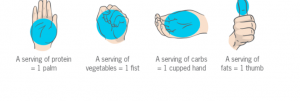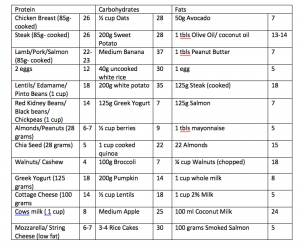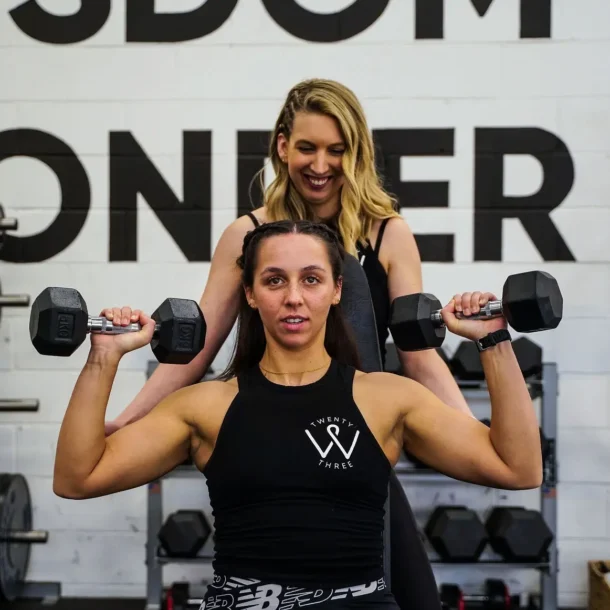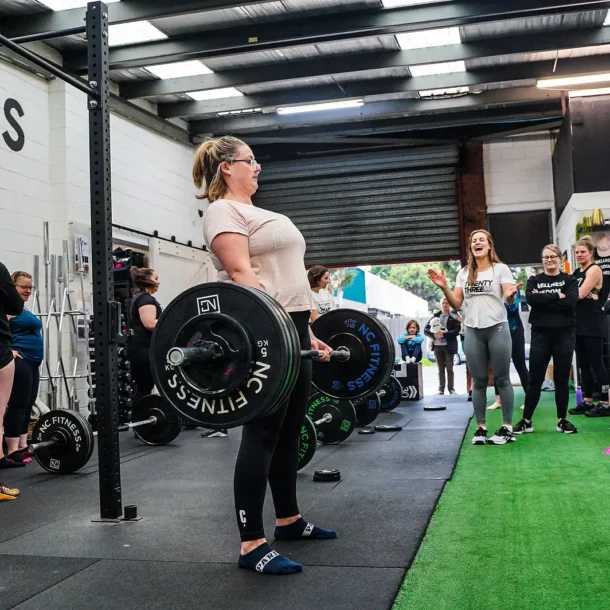

Tracking calories and macros is the most direct way to seeing changes in body composition. This is because you are able to measure and execute your exact nutrition plan and reflect on your progress and make changes where necessary.
But there is more to body re-composition than eating an exact, gram for gram, specific macros and calorie ‘budget’. It is possible to see good results from following a more intuitive process that does not involve tracking. To do this, it is important that you have a good understanding of what a macro is, what foods are high in specific macronutrients and how
much is an average serve.
Having spent some time tracking food using My Fitness Pal or a similar application, will give you important skills in being able to eye ball food portions, understand the ratio between carbs, fats and protein and gain a much better understanding
of how portion size can dramatically affect your results.
Rule One- Always Pre-plan
Regardless of whether you track food, you should always pre-plan meals and consider where your macros are best placed in your diet. Pre-planning meals means thinking in advance about what food you are going to eat when, when you are going to train and
sometimes having food ready or partially ready to eat when needed.
Rule Two- Know your goal
Generally speaking, you might be looking to tailor your nutrition plan towards one of three general goals; to drop body fat (cut), increase muscle mass (build) or improve performance. When you first start training it is possible to achieve all three goals at the same time by making simple changes to your diet and training regime. But as your training years increase, your margins for improvement decrease too. Therefore, it becomes an advantage to alternate between nutrition plans focused on cutting and building.
Goal One: Weight Loss
This would involve a ‘cut’ in calories below maintenance. For fat loss, you need to be able to sustain this calorie deficit, meaning that you are eating slightly less than you are burning, and your body is tapping into stored body fat for the extra calories. Be mindful that going too low in your calorie intake, as this can actually cause your weight loss to stall, and lead to other serious health issues. When in a cutting phase, you need to be more mindful with where you place your carbs and meal timing so that you are not ravenously hungry, loose quality of sleep or slow down your ability to recover between workouts.
Goal Two: Muscle Gain
Eating to put on lean muscle mass or wanting to see significant muscle definition, requires a very different approach than fat loss. If you want to gain more size or muscle mass, you need to be eating in a caloric surplus, which might be only a few hundred calories above your maintenance needs. You will should not feel hungry in this phase. A focus on having at
least 20 to 25 grams of protein from food or protein powders within two hours of training for maximum muscle growth and recovery post-workout will support this goal.
Goals Three: Performance
First, eating at your maintenance calories is crucial for performing well in the gym. Undereating is one of the primary reasons why women stall in their performance improvements or actually see a loss of ability despite training hard. Eating for performance
will have a flow on effect on aesthetics as well. While protein intake is important, your carbohydrate intake pre- and post-workout often plays a bigger role in how well you can perform at higher intensity, anaerobic training. Aim for 20 to 60 grams of carbohydrates within two hours of training for maximum glycogen synthesis and recovery from your
training session.
Rule Three- Know your portion size
Using your hand is the best way to control portion sizes. You should first start by building your meal around your protein source. One palm size of protein is around 20-30 grams of protein. 1 serve of starchy vegetables/ fruit is equal to 1 cupped handful of carbs (around 20-30 grams) and one thumb size of fats (7-12 grams). The amount of non-starchy veggies that is recommended is virtually unlimited, but should be at least 1 fist of veggies per meal. Generally speaking an average female should have 3-4 meals with 1 palm of protein, 1 fist of veggies, 1 cupped handful of carbs and a thumb of protein. This would set her up on a meal
plan of around 1200-1500 calories.

Grams of macronutrients in common foods (approx.)

Rule Four- Tailor a plan to suit your needs and training
Broadly speaking, women should eat:
1. 1 palm of protein dense foods with each meal;
2. 1 fist of vegetables with each meal;
3. 1 cupped hand of carb dense foods with most meals;
4. 1 entire thumb of fat dense foods with most meals.
Now you need to tailor this plan to meet your needs. If you are more active, you need to add another meal or if you are inactive, remove some carbs.
Generally:
Would you like to know more about nutrition, consider booking in for a complimentary 15 minute chat with one of our coaches today.

Ange Drake is an personal trainer, women’s empowerment coach and fitness blogger in the northern suburbs of Melbourne. She is the director of one of the few womens’ only strength training gyms in Melbourne, 23W. Ange helps women to learn how to use strength based training, nutritional strategies and a positive mindset to transform their bodies, relationship with food and mind.
Can’t decide which of our packages is best suited for you? Take our questionnaire to help you decide!





